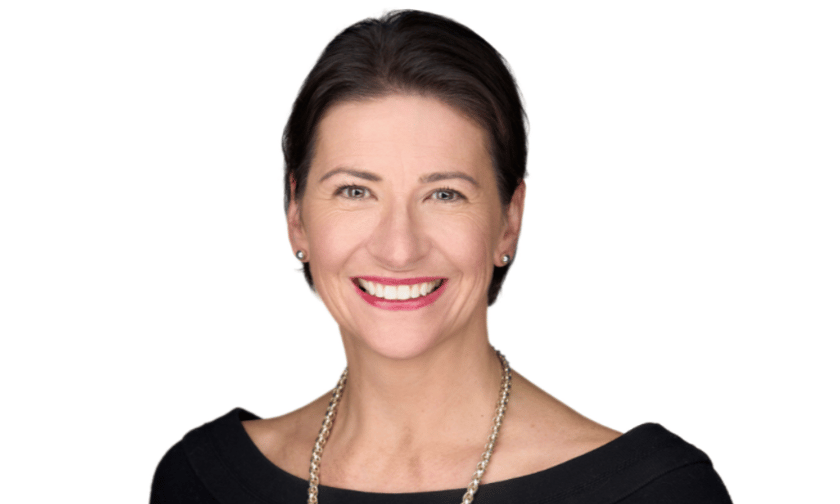

Though it’s the world’s leading insurance marketplace, Lloyd’s business is heavily concentrated in North America – about 58% of its total market. Despite this, its engagement with the region has often been indirect. Now, that’s changing.
Elizabeth Jenkin (pictured), underwriting director of the Lloyd’s Market Association (LMA), is helping lead a more deliberate push into the US market. LMA represents the interests of underwriting businesses within Lloyd’s, which includes all 55 Lloyd’s managing agencies and all members’ agents.
“The LMA has always been focused on North America, but we just haven't been very vocal about it,” Jenkin told Insurance Business. “Historically, we’ve engaged through committees from London. We need to be on the ground in North America, speaking to members, brokers, and associations like WSIA to understand where we can help.”
Lloyd’s dominance is underpinned by a reputation for handling complex risks, but Jenkin wants to ensure that it isn’t merely a backstop for difficult-to-place risks.
“The market wants to continue to grow, but in a profitable and sustainable way,” she explained. “We don't just want to be the market of last resort.”
Jenkin outlined three key objectives for LMA: promoting Lloyd’s expertise and value proposition, educating brokers, underwriters, and risk managers about innovations within Lloyd’s, and providing support, particularly in regulatory and technical guidance.
“In London, we excel at this, working with the UK government and regulators across Europe. Now, we want to strengthen our presence in the US and engage with regulatory stakeholders,” Jenkin said. “This isn’t new for the LMA—we’ve already been doing some of this, but now we’re formalizing our approach, getting boots on the ground, and directly engaging organizations.”
The goal is to bridge the gap, giving brokers, underwriters, and risk managers a clearer understanding of what Lloyd’s can offer and where LMA can step in. “Think of us as a bridge, educating both WSIA and London market members on North American developments,” she added.
The regulatory landscape in the US presents one of the biggest immediate challenges. Unlike many other markets where regulations are handled at a national level, the US is mostly governed at the state level, limiting federal policy impact.
This means insurers must navigate a fragmented system where each state can introduce its own rules on emerging issues like artificial intelligence (AI), sometimes creating confusion and unpredictability.
“At the LMA, we’ve been working on AI and cyber clauses, assessing how they would perform in loss scenarios involving AI,” Jenkin said. “It’s been a valuable exercise—overlaying AI on to LMA clauses, analyzing different lines of business, and advising managing agents on potential responses.”
The growth of the excess and surplus (E&S) market is another development bringing new attention to regulatory oversight. In the first half of 2024, Jenkin said there was a 10% increase in surplus lines business, despite the broader market environment.
“It's coming into London, and with it, more interest from US state regulators,” Jenkin said. That increased scrutiny could lead to new regulation, she said, with some states considering whether to apply the same standards to E&S underwriters as they do to admitted carriers.
Finally, the US political climate also has implications for insurance. Potential policy changes during the Trump administration could create shifts in demand.
“I think (President) Trump is planning some tax breaks, which could lead to a heating up of M&A, and if you've got a heating up of M&A, you've probably got transactional liability coming hot on the heels,” Jenkin pointed out. Transactional liability is an area where London excels, and she sees it as an opportunity for growth.
Tariffs and geopolitical tensions are also pushing more business into Lloyd’s specialty markets. Trade wars and economic uncertainty fuel demand for political risk and trade credit insurance, both areas where London has a deep bench of expertise.
“I could see business flowing to Lloyd’s in response to the geopolitical tension we're seeing at the moment,” Jenkin said.
With wildfires, hurricanes, and other disasters increasing in frequency and severity, insurers must prepare for growing exposure. To address this, Jenkin said Lloyd’s is planning to expand its list of five peak perils considered in its natural catastrophe exposure management, called the LCM5, to include some of the so-called secondary perils.
“In terms of catastrophe exposure, Lloyd’s remains underweight as a marketplace, meaning there’s still reasonable appetite rather than a constraint on capacity,” she said. “The key is ensuring profitable, sustainable business comes in.”
Lloyd’s is also exploring other ways to address catastrophe risks beyond simply writing more policies. Lloyd’s Lab, the insurance and reinsurance market’s innovation hub, is shifting its innovation efforts from post-event response to pre-risk prevention.
“For example, wildfire mitigation technology analyzes vegetation around homes and suggests modifications to reduce contagion risk,” Jenkin said. “These innovations, alongside underwriting appetite, can help make coverage more sustainable and profitable.”
Ultimately, LMA’s efforts to engage more directly with the North American market are not about starting from scratch but rather formalizing and expanding efforts behind the scenes, Jenkin said.
By serving as a bridge, LMA can help North American brokers and regulators understand the nuances of the London market, while also giving London-based underwriters clearer insights into developments overseas.
Do you have something to say about this story? Please share a comment below.
